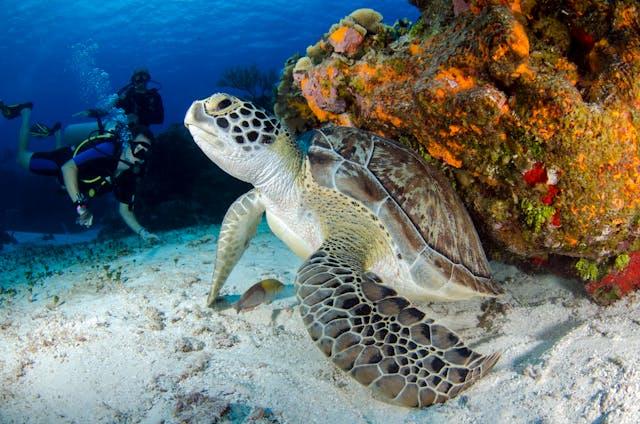How Long Can Sea Turtles Hold Their Breath? Sea turtles can hold their breath for several hours under resting conditions, with dives typically lasting from 4 to 5 hours but can extend up to about 7 hours when sleeping or resting.
Understanding Sea Turtle Breathing
Sea turtles are air-breathing reptiles that spend the majority of their lives in the ocean.
They have adapted to live a mostly aquatic life but must come to the surface to breathe air.
The duration for which they can hold their breath varies significantly depending on their activity level.
Factors Influencing Breath-Holding
- Activity Level: Active swimming requires more oxygen, reducing the time sea turtles can stay underwater.
- Stress or Threat: Under threat, turtles may increase their physical activity, thus decreasing their ability to hold their breath.
- Temperature: Colder water can reduce metabolic rates, allowing turtles to hold their breath for longer periods.
Breath-Holding Abilities in Different Conditions
Sea turtles exhibit remarkable breath-holding capabilities that vary widely:
- Foraging and Active Swimming: During active swimming or foraging, sea turtles may hold their breath for 15 to 30 minutes.
- Resting or Sleeping: When resting or sleeping underwater, particularly in cooler waters, they can remain submerged for several hours without surfacing for air.
Can Sea Turtles Drown?
Yes, sea turtles can drown if they are unable to reach the surface to breathe, which might happen if they are trapped in fishing nets or other debris.
Thus, while they are well-adapted to aquatic life, access to the surface is crucial for their survival.
Sea Turtles on Land

While sea turtles are adept swimmers and can stay underwater for long periods, they are much more vulnerable on land.
They come ashore primarily for nesting purposes, and during these times, they do not face the same breathing challenges as in water since they breathe air.
Conservation Implications
Understanding the breathing patterns and needs of sea turtles is essential for their conservation:
- Protecting Nesting Sites: Ensuring that nesting beaches are safe and accessible for sea turtles to lay eggs.
- Reducing Bycatch: Implementing fishing practices that reduce the accidental capture of sea turtles, which can prevent drowning.
- Marine Debris Reduction: Cleaning up oceans to ensure sea turtles do not get caught in debris and are able to surface for air as needed.
Conclusion
Sea turtles’ ability to hold their breath for hours highlights their remarkable adaptation to marine environments.
However, their dependence on surfacing to breathe makes them vulnerable to threats from human activities and environmental changes.
Protecting their natural habitats and ensuring clean, unobstructed ocean waters are crucial for the survival of these ancient mariners.






